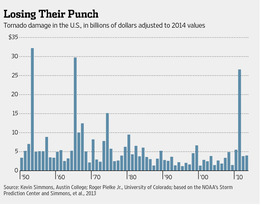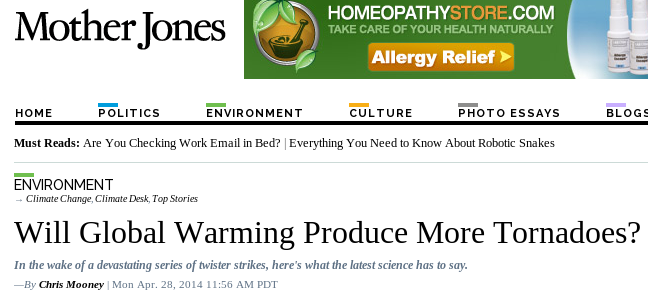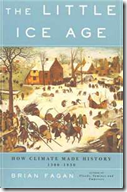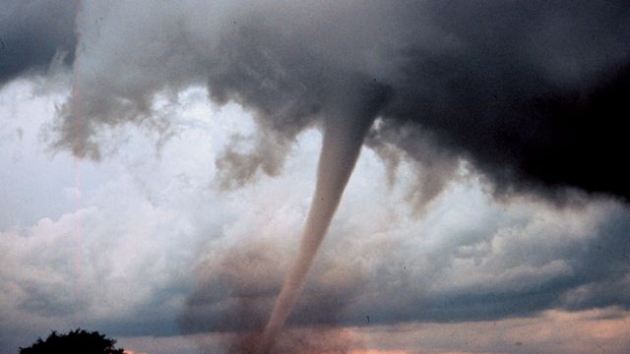United States: More Tornadoes in the Future?
 Professor Roger Pielke is an objective and well-informed professor of environmental policy at the University of Colorado. He had a useful column in the Wall Street Journal last Saturday, The Decline of Tornado Devastation, debunking the claims of the global warming/climate change wackos, who seek to persuade you that a carbon tax will somehow reduce severe storms, and tornadoes especially. Pielke’s chart of normalized tornado damage is nearby. Bottom line: damage is decreasing, as a result of better science, technology (radar), and communication. The USA will never be spared tornadoes, because of our geography. We were reminded of this only a day after Pielke’s column, when tornadoes struck Arkansas.
Professor Roger Pielke is an objective and well-informed professor of environmental policy at the University of Colorado. He had a useful column in the Wall Street Journal last Saturday, The Decline of Tornado Devastation, debunking the claims of the global warming/climate change wackos, who seek to persuade you that a carbon tax will somehow reduce severe storms, and tornadoes especially. Pielke’s chart of normalized tornado damage is nearby. Bottom line: damage is decreasing, as a result of better science, technology (radar), and communication. The USA will never be spared tornadoes, because of our geography. We were reminded of this only a day after Pielke’s column, when tornadoes struck Arkansas.
What makes the wind blow? In a word (or two), “temperature differences.” If you live near a coast, you’re familiar with the land breeze and sea breeze effect. In the daytime, the land warms more rapidly than the sea, and a breeze from the sea flows in to replace the rising air. At night, the land cools more rapidly than the sea, and the cooler, more dense air flows outward from the land. Pretty easy to understand, especially for a Floridian. You may not realize that simple explanation is the major driver of the Earth’s general circulation, but it’s true. And you thought meteorology and climate were complicated! Just remember, it’s the difference of temperatures that causes the circulation, the wind, not the absolute temperature value. Herewith, a couple more examples.
In the large land mass of Asia, Summertime heating causes formation of a low pressure system over Siberia, while the western Pacific and Indian Ocean remain relatively cool. The result is the Summer monsoon, bringing rain as the humid oceanic air rises over the mountains; millions of people depend on the monsoon rains for their food. Of course, there’s a lesser-known Winter monsoon as well, when cool air from China and India pushes south. For the same reasons, there’s an American “monsoon” and an African “monsoon”; in meteorology, any seasonal reversal of circulation is referred to as a “monsoon.”
The major temperature difference that drives atmospheric circulation is that between the wintertime pole and the “thermal equator”, the subsolar location, which moves 24 degrees North and South between the solstices. The difference is most intense and most localized in the mid-latitudes, approximately 30 degrees to 60 degrees North and South. We call those intense differences “fronts”, a name deliberately evocative of the military “fronts” of World War One, when meteorological science was being formulated in Norway. The stronger that contrast, the greater the violence in the storm.
The “global warming” doctrine claims that carbon dioxide (CO2) will cause worldwide warming, and that this warming will be greatest at the poles – the Arctic Ocean ice will melt, the two-mile thick Greenland icecap will melt, sea level will rise, coastal cities will be flooded, millions of “climate refugees” will overrun neighboring regions, and, oh yes, storms will become more severe. This is, of course, self-contradictory. If the poles were to become warmer, the thermal contrast that drives the General Circulation would become weaker and storms would become less intense. Very big if, since there’s no evidence of polar warming. Polar sea ice is at record levels, as is ice on the Great Lakes.
 That’s why it’s maddening to read the idiotic pronouncements of “global warming” liars such as Chris Mooney, a self-appointed “science and political journalist” (i.e., he’s an English major) writing for Mother Jones magazine. His latest piece of anti-scientific nonsense was out on Monday, the day after the tornadoes killed 14 people in Arkansas. Mooney not only claims “global warming” is responsible, he asks “Will Global Warming Produce More Tornadoes?” You can guess his answer: of course. The climate models – which have been wrong for 17 years and counting – predict so. The real basis of Mooney’s prediction is the liberal obsession to destroy economic freedom in the name of saving the planet.
That’s why it’s maddening to read the idiotic pronouncements of “global warming” liars such as Chris Mooney, a self-appointed “science and political journalist” (i.e., he’s an English major) writing for Mother Jones magazine. His latest piece of anti-scientific nonsense was out on Monday, the day after the tornadoes killed 14 people in Arkansas. Mooney not only claims “global warming” is responsible, he asks “Will Global Warming Produce More Tornadoes?” You can guess his answer: of course. The climate models – which have been wrong for 17 years and counting – predict so. The real basis of Mooney’s prediction is the liberal obsession to destroy economic freedom in the name of saving the planet.
 End of story, right? Mooney’s wrong. But, Mooney’s wrong for the wrong reason. He claims the poles are warming; they’re not. They’re cooling; polar sea ice is at record levels. What will that do to mid-latitude winds and storms? Make them stronger! Bad news! We’re seen this happen before – in the Little Ice Age, from 1400 to 1850 – and especially during the minimum of sunspots between 1650 and 1730, known as the Maunder Minimum.
End of story, right? Mooney’s wrong. But, Mooney’s wrong for the wrong reason. He claims the poles are warming; they’re not. They’re cooling; polar sea ice is at record levels. What will that do to mid-latitude winds and storms? Make them stronger! Bad news! We’re seen this happen before – in the Little Ice Age, from 1400 to 1850 – and especially during the minimum of sunspots between 1650 and 1730, known as the Maunder Minimum.
For a few examples of life during the Little Ice Age, let me refer you to the book of that name, by Professor Brian Fagan, an archaeologist at the University of California, Santa Barbara. The following examples of storms in a period of cooling are from his book.
Between 1680 and 1730, the coldest cycle of the Little Ice Age, temperatures plummeted and the growing season in England was about five weeks shorter then than now. The winter of 1683/4 was so cold that the ground froze to a depth of more than a meter in parts of south west England and belts of ice appeared off the Channel coast of England and northern France. The ice lay up to 30 miles offshore along the Dutch coast and many harbours were so choked with ice that shipping halted throughout the North Sea.
Another exceptional winter was that of 1708/9. Deep snow fell in England and lasted for weeks while further East people walked from Denmark to Sweden on the ice as shipping was again halted in the North Sea. Hard frosts killed thousands of trees in France, where Provence lost most of its orange trees and vineyards were abandoned in northern France, not to be recultivated until the 20th Century. In 1716 the Thames froze so deep that a spring tide raised the ice fair on the river by 4 meters! The summer of 1725 in London was the coldest in the known temperature record and described as “more like winter than summer”.
Later in the 17th Century, great storms blew millions of tonnes of formerly stable dunes across the Brecklands of Norfolk and Suffolk, burying valuable farm land under meters of sand. This area has never recovered and is heathland. A similar event occurred in Scotland in 1694. The 1400 hectare Culbin Estate had been a prosperous farm complex next to the Moray Firth until it was hit by another huge storm which blew so much sand over it that the farm buildings themselves disappeared. A rich estate had become a desert overnight and the owner, the local Laird, died a pauper three years later.
Am I trying to scare you? No; hopefully we’re in for a couple of solar cycles’ (22 years) worth of cooling, like the 22 years of warming from 1976 to 1998. Let’s hope we don’t experience the deadly weather of Europe during the 1650 – 1730 years of the Little Ice Age. But if we do have some more harsh Winters and cool Summers, don’t let people like Mooney and Mother Jones tell you it’s evidence of “global warming.”


